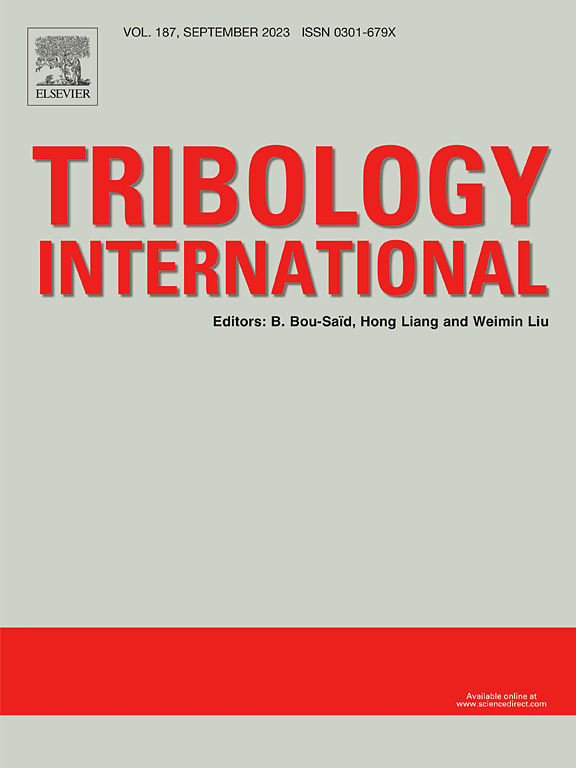Preparation of near superlubric polysiloxane/Ti3C2Tx nanocomposite coating by incorporating polyalphaolefin oil microcapsules
IF 6.1
1区 工程技术
Q1 ENGINEERING, MECHANICAL
引用次数: 0
Abstract
Superlubricity, characterized by nearly vanished friction, has the great potential to significantly enhance the lubrication capabilities of self-lubricating coatings and their operational lifespan. In this work, commercial polyalphaolefin oil has been encapsulated within polystyrene shell for microcapsules synthesize, which have been further introduced into a specially designed “soft” and “hard” polysiloxane/Ti3C2Tx nanocomposite coating. The tribological test results show that the prepared composite coating displays a remarkable synergistic lubrication effect, achieving nearly superlow friction of 0.016 and an ultralow wear rate of 1.9 × 10−8 mm3/N·m simultaneously. The comprehensive mechanism analysis indicates that the extraordinary superlubrication effect is derived from the desirable mechanical properties of the polysiloxane/Ti3C2Tx nanocomposite coating and the favorable liquid lubrication effect of embedded oil microcapsules, wherein the former could enhance the conformity of surface morphology when the mating surfaces are in contact, thereby facilitating the formation of numerous microchannels; in the meanwhile, the latter could be friction-induced ruptured and then release oil molecules at the friction interface, adsorbing to the coating surface and forming an effective boundary-lubricating oil film. As a result, a remarkable synergistic lubrication effect could be created to significantly enhance the lubrication effect. It could be anticipated that this finding could expedite a broader utilization of self-lubricating coatings and superlubricity technology in the practical industrial sectors.
求助全文
约1分钟内获得全文
求助全文
来源期刊

Tribology International
工程技术-工程:机械
CiteScore
10.10
自引率
16.10%
发文量
627
审稿时长
35 days
期刊介绍:
Tribology is the science of rubbing surfaces and contributes to every facet of our everyday life, from live cell friction to engine lubrication and seismology. As such tribology is truly multidisciplinary and this extraordinary breadth of scientific interest is reflected in the scope of Tribology International.
Tribology International seeks to publish original research papers of the highest scientific quality to provide an archival resource for scientists from all backgrounds. Written contributions are invited reporting experimental and modelling studies both in established areas of tribology and emerging fields. Scientific topics include the physics or chemistry of tribo-surfaces, bio-tribology, surface engineering and materials, contact mechanics, nano-tribology, lubricants and hydrodynamic lubrication.
 求助内容:
求助内容: 应助结果提醒方式:
应助结果提醒方式:


